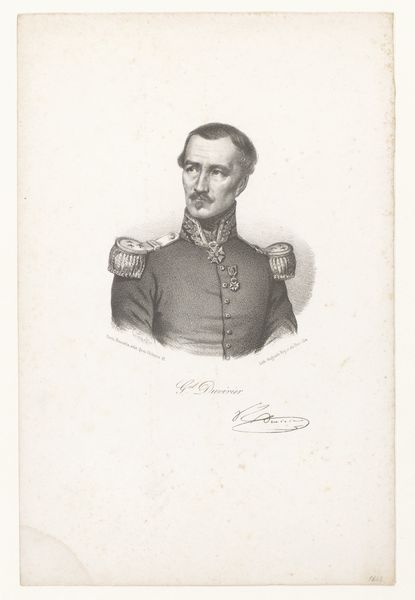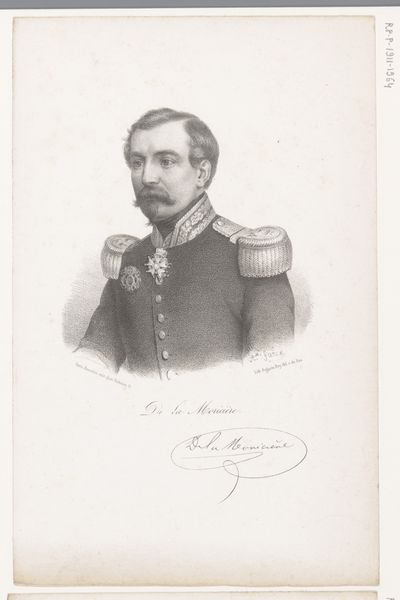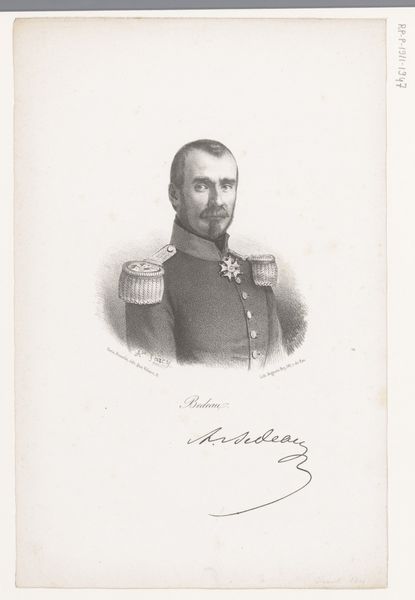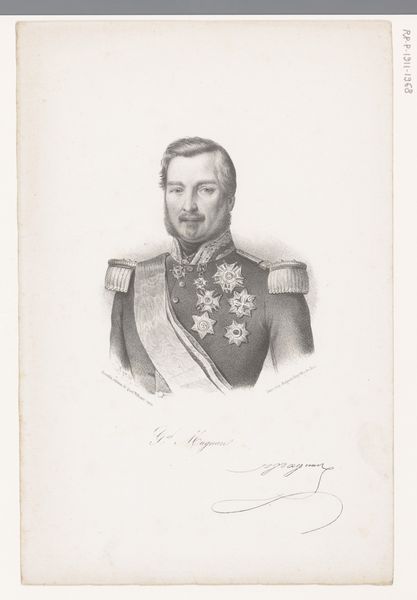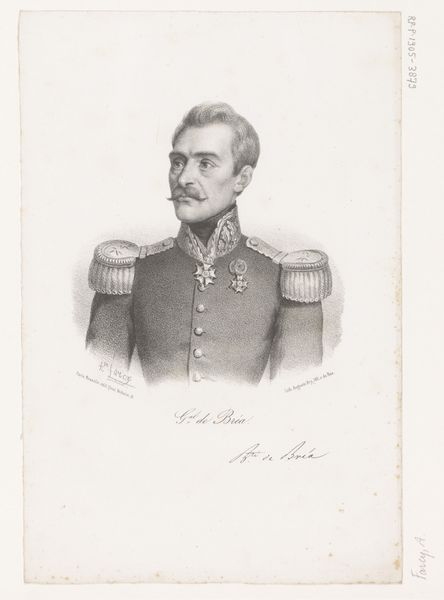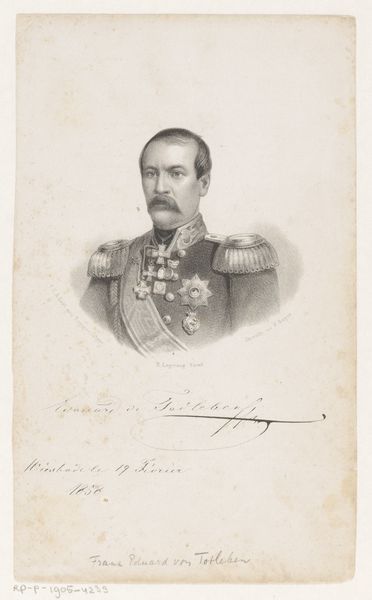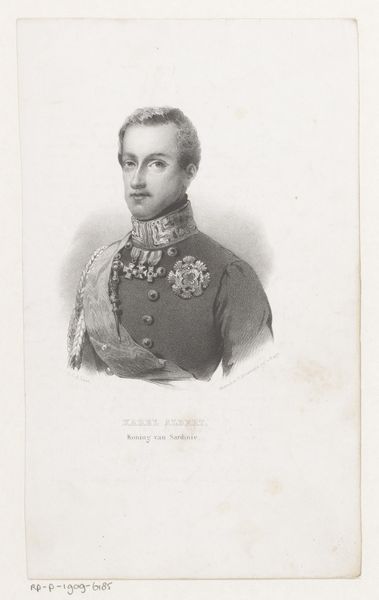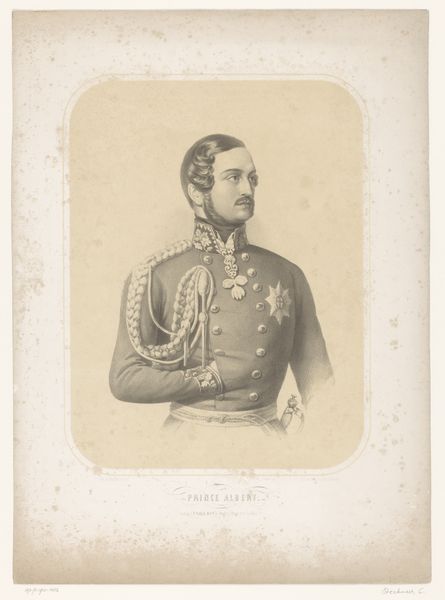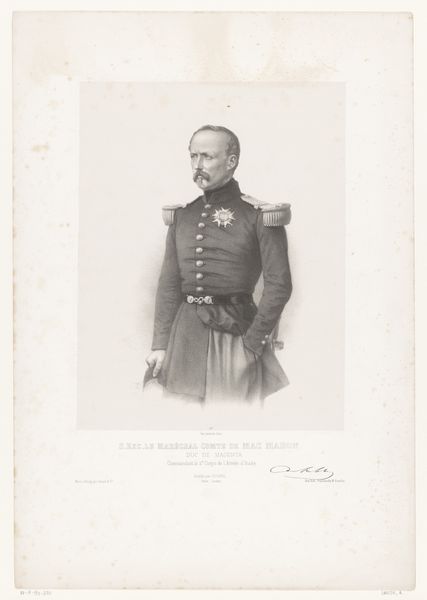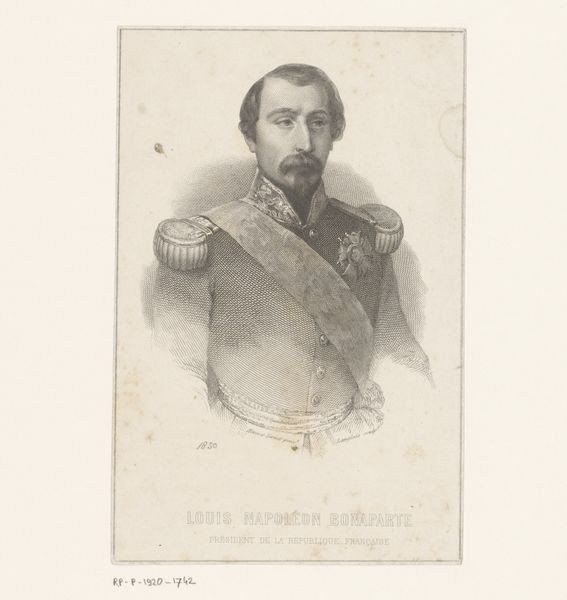
drawing, pencil
#
portrait
#
drawing
#
pencil drawing
#
pencil
#
academic-art
#
realism
Dimensions: height 273 mm, width 180 mm
Copyright: Rijks Museum: Open Domain
Editor: So, here we have a pencil drawing entitled "Portret van generaal François-Marie-Casimir de Négrier" made sometime between 1832 and 1861 by Léopold Massard. I'm immediately struck by how...official it feels, yet there's a starkness in the medium. What do you see in this piece, considering the social and historical context? Curator: It's fascinating how a seemingly straightforward portrait can reveal complex power dynamics. This image, though rendered with academic precision, invites us to consider the role of military figures like General Négrier within a specific historical frame. His medals and uniform, symbols of authority, can also be viewed as representations of state violence, especially when thinking about the historical moment this was created, likely during a period of colonial expansion. How does his gaze make you feel? Does it evoke trust or something else? Editor: Hmm, I think there's an element of detached authority in his gaze. Knowing the context, the pencil medium itself makes me think about accessibility - a portrait made when photography was rare maybe, a kind of dissemination of power through image making. But what about his individual identity? How does this artwork relate to issues of personal identity versus public persona? Curator: That's an important point. While the portrait serves to solidify his public image, it also prompts questions about his internal life and experiences. How might Négrier have perceived his own role in shaping France’s colonial ambitions? We can read the portrait not only as a symbol of power but also as an artifact of a specific social class, one shaped by notions of duty, honor, and nationalism. To what extent can portraiture allow a critical assessment of historical figures? Editor: I see. The drawing prompts critical questions about the figure's position in systems of power. Now I’m viewing not just a portrait, but a lens into 19th-century France’s complex relationship with militarism and identity. Curator: Exactly. Thinking about artworks this way allows us to use them to interrogate the social constructs they represent, instead of just celebrating them uncritically.
Comments
No comments
Be the first to comment and join the conversation on the ultimate creative platform.
